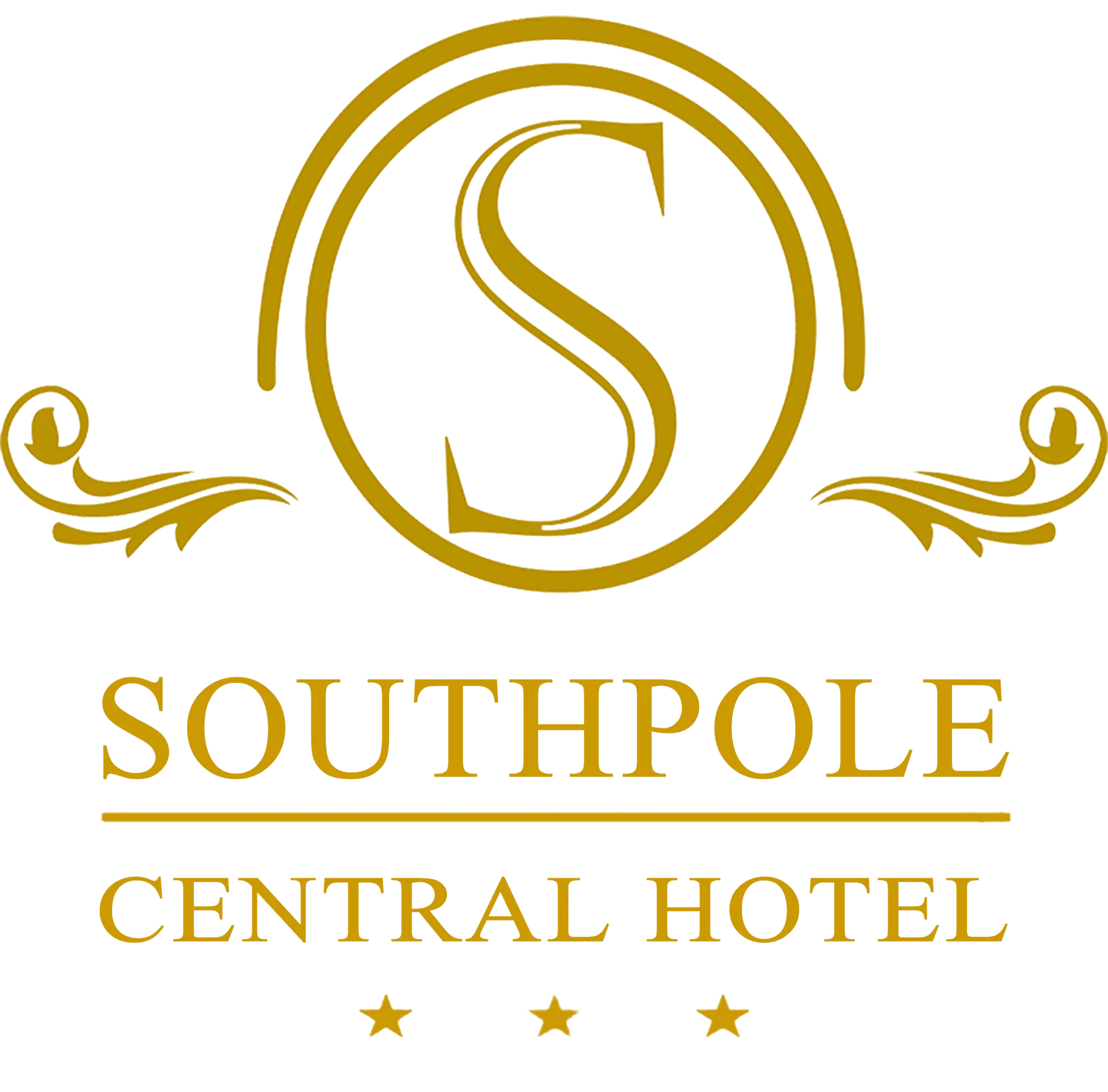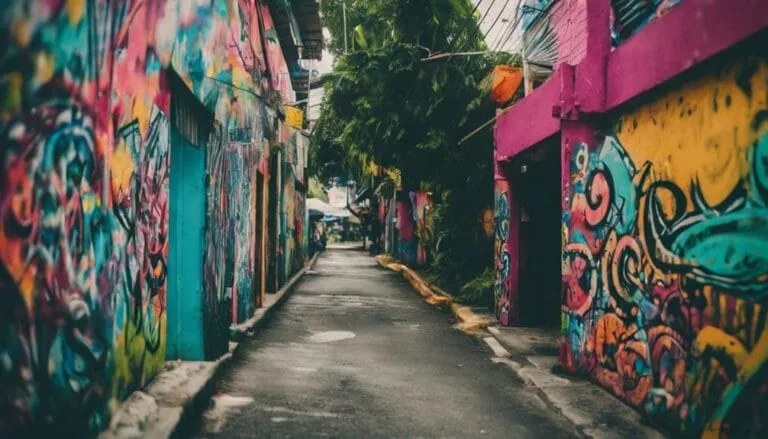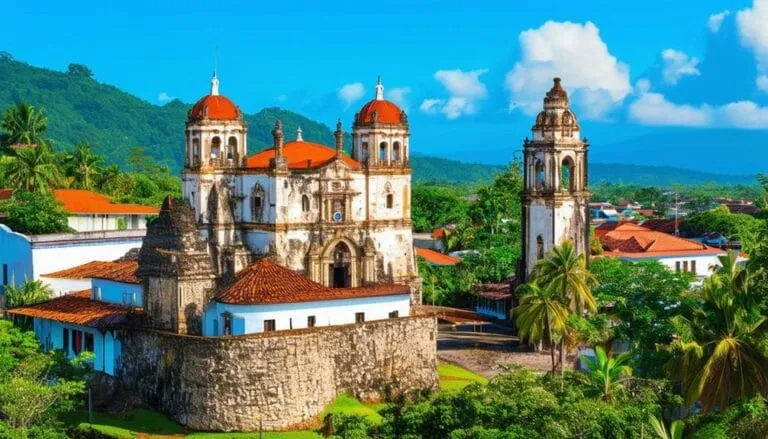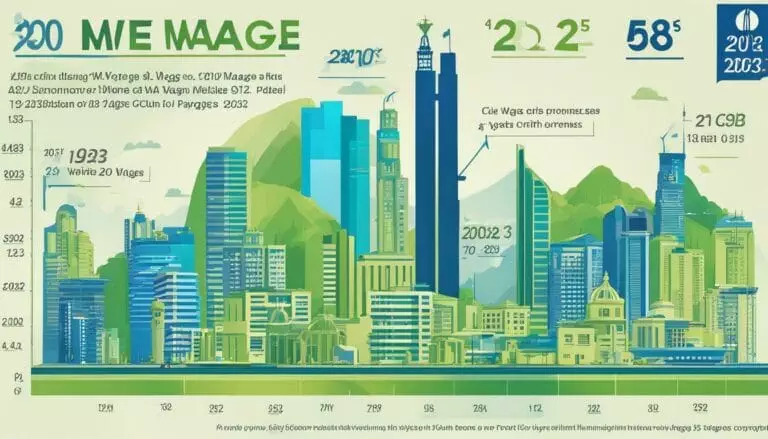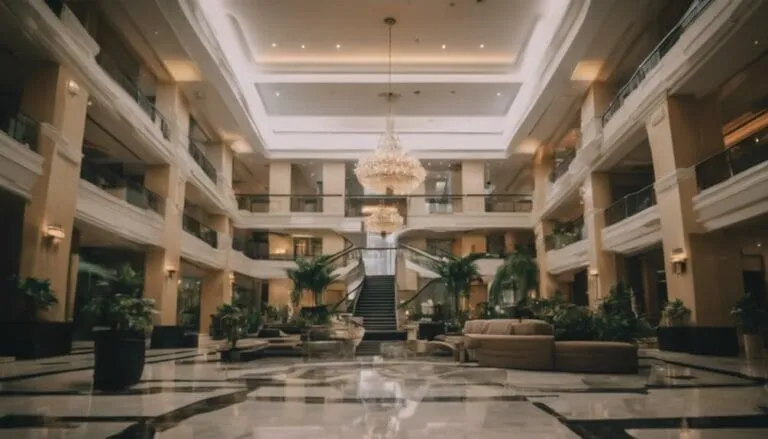Cebu National Museum Exhibits
When you visit the Cebu National Museum, you'll encounter a diverse array of exhibits that encapsulate the region's rich cultural and natural heritage. From the Kinaiyahan gallery's stunning display of local biodiversity to the Karaang Sugbo exhibit's archaeological treasures like the gold death mask, each section offers a unique glimpse into Cebu's past. The Paglawig gallery further immerses you in maritime history, featuring artifacts from shipwrecks and traditional boat-building techniques. But have you ever wondered what specific stories these artifacts tell about Cebu's evolution and identity?
Key Takeaways
- The Kinaiyahan gallery showcases Cebu's extinct Tamaraw and natural wonders.
- The Karaang Sugbo exhibit features archaeological treasures, including a gold death mask.
- The Paglawig gallery displays maritime artifacts from shipwrecks, highlighting seafaring traditions.
- A special exhibition from the Philippine Center in New York presents 92 modern artworks.
- Interactive displays and artifacts illustrate Cebu's cultural and economic history.
Overview of Cebu National Museum
The Cebu National Museum, a remarkable addition to the National Museum of the Philippines network, opened its doors to the public on August 1, 2023, in the historic Malacañan sa Sugbo building at Plaza Independencia.
This museum offers a unique window into Cebu's rich cultural heritage, celebrating the region's history and vibrant present.
When you visit, you'll discover five thoughtfully curated galleries. These exhibitions explore everything from Cebu's biodiversity to its deep-rooted maritime history.
The "Kinaiyahan" gallery is a must-see, spotlighting the natural wonders of Cebu with a focus on its diverse ecosystems. Equally compelling is the "Paglawig" gallery, where you'll journey through Cebu's maritime history, exploring artifacts that tell the story of the region's seafaring traditions.
Beyond these, the museum also hosts a special exhibition from the Philippine Center in New York. Here, you can admire 92 modern and contemporary artworks, adding a fresh dimension to your cultural exploration.
Admission is free, making it easy for you to immerse yourself in this enriching experience, whether you're a local or a traveler.
This museum is a reflection of Cebu's storied past and promising future.
Key Exhibits and Highlights

As you explore the Cebu National Museum, you'll find the Kinaiyahan gallery enchanting with its showcase of Cebu's extinct Tamaraw and other natural wonders.
Don't miss the Karaang Sugbo exhibit, where archaeological treasures like a gold death mask reveal the region's ancient history.
The Paglawig gallery, filled with maritime artifacts from shipwrecks, vividly depicts Cebu's rich seafaring traditions.
Kinaiyahan Natural Wonders
Immerse yourself in the wonders of Cebu's natural heritage with a visit to the Kinaiyahan gallery at the Cebu National Museum. This exhibit showcases Cebu's natural wonders, emphasizing the island's unique biodiversity and stunning geological formations.
You'll find the gallery rich in displays that highlight the region's ecological significance and the need for conservation.
Among the must-see highlights are:
- The Extinct Cebu Tamaraw: This exhibit pays homage to an emblematic species that once roamed Cebu, reminding you of the island's rich wildlife heritage.
- Geological Formations: Discover the island's unique geological features, providing insight into Cebu's natural history and landscape.
- Biodiversity Displays: Explore the diverse flora and fauna endemic to Cebu, offering a deeper understanding of the island's vibrant ecosystems.
The Kinaiyahan gallery isn't just an exhibit; it's an educational platform designed to promote appreciation and awareness of Cebu's natural environment.
Interactive and informative displays make it an engaging experience, where you can learn about the island's ecological significance and the critical importance of conservation.
Maritime History Artifacts
Stepping into the Maritime History Artifacts exhibit at the Cebu National Museum, you'll uncover the profound maritime legacy that has shaped Cebu's history. This exhibit is a treasure trove of artifacts recovered from shipwrecks, underscoring Cebu's pivotal role as a maritime hub in the Philippines.
You'll be captivated by the traditional boat-building techniques on display, showcasing the evolution of maritime trade and cultural exchanges between Cebu and other countries. The replicas of ancient trade vessels offer a glimpse into the maritime technology that early Cebuano sailors relied on, reflecting their ingenuity and craftsmanship.
Notable artifacts include navigational tools and cargo remnants, illustrating the dynamic trading activities that connected Cebu with neighboring islands and foreign traders. These items tell a story of economic prosperity and cultural richness, driven by Cebu's maritime traditions.
As you explore, you'll gain a deeper appreciation of how Cebu's maritime heritage has greatly impacted the province's economic and cultural development. The exhibit is designed to educate and inspire, shedding light on the enduring legacy of Cebuano maritime history.
It's a journey through time that reveals the resilience and innovation of Cebu's seafaring ancestors.
Cebuano Archaeological Treasures
Visitors to the Karaang Sugbo gallery in the National Museum Cebu will often find themselves mesmerized by the array of significant archaeological treasures on display.
These artifacts provide a vivid glimpse into the rich tapestry of Cebuano life, ancient cultural beliefs, and the region's extensive trade connections.
One of the standout exhibits is the gold death mask from Boljoon. This remarkable piece of artistry offers deep insights into the burial practices and spiritual beliefs of early Cebuanos.
The craftsmanship is a reflection of their sophisticated artistry and reverence for the afterlife.
Artifacts from San Remigio play an essential role in understanding pre-colonial Cebuano life.
These finds include implements and tools that demonstrate the advanced skills and daily activities of early inhabitants. They also underscore Cebu's role as a bustling center of trade, as evidenced by the variety of materials and designs.
Here are three key highlights you shouldn't miss:
- Gold Death Mask: Reflects burial practices and artistry.
- San Remigio Artifacts: Showcases daily life and trade connections.
- Pottery and Burial Jars: Illustrates cultural beliefs about death and the afterlife.
These exhibits collectively affirm Cebu's pivotal role in regional history.
Visitor Information and Hours

You'll find the Cebu National Museum open from Tuesday to Sunday, 9:00 AM to 5:00 PM, and the best part is that admission is free.
Located at Malacañan sa Sugbo on A. Pigafetta St., Cebu City, it's easily accessible whether you're a local or a tourist.
Plan your visit to explore the rich Cebuano heritage without worrying about entrance fees, and enjoy the convenience of its central location.
Operating Hours Overview
For an enriching cultural experience, the National Museum of the Philippines in Cebu opens its doors to the public from Tuesdays to Sundays, between 9:00 AM and 5:00 PM. This schedule lets you explore the rich history and vibrant culture of Cebu at your own pace.
Here's a quick rundown to help you plan your visit:
- Operating Hours: The museum welcomes visitors from 9:00 AM to 5:00 PM, making it the perfect daytime activity.
- Closed Days: Note that the museum is closed on Mondays and religious holidays, giving staff time to maintain and enhance the exhibitions.
- Free Admission: Enjoy unrestricted access without financial barriers, making it an ideal outing for everyone.
The National Museum of the Philippines in Cebu houses five galleries, each dedicated to showcasing different facets of Cebu's history, culture, and natural wonders.
To make the most of your visit, consider arriving early, especially on weekday mornings, for a quieter and more immersive experience. This allows you to take full advantage of the operating hours and explore the exhibitions in a relaxed setting.
Whether you're a history buff or just curious, the museum offers a wealth of knowledge and inspiration, completely free of charge.
Free Admission Details
As of June 2024, you can enjoy free admission to the National Museum Cebu, making it easier than ever to immerse yourself in Cebuano heritage.
This initiative guarantees that all visitors, whether locals or tourists, can explore the museum's rich collection without any financial barriers.
Located in the historic Plaza Independencia, the museum invites you to explore the vibrant history and culture of Cebu.
The National Museum Cebu opens its doors from 9:00 am to 5:00 pm, Tuesdays through Sundays, allowing you ample time to wander through its exhibits.
Note, however, that the museum remains closed on religious holidays.
This schedule provides flexibility for both weekday and weekend visits, catering to different preferences and schedules.
Accessibility and Transport
With free admission now available, planning your visit to the National Museum Cebu has never been more straightforward. Open from 9:00 am to 5:00 pm, Tuesdays through Sundays, the museum offers ample opportunity to immerse yourself in Cebu's rich cultural heritage.
Situated at Plaza Independencia, it's an ideal destination for anyone keen for an enriching cultural visit.
Accessing the National Museum Cebu is a breeze with multiple public transport options. Jeepneys and taxi/Grab services provide convenient and affordable ways to reach the museum.
Plus, its proximity to key landmarks like Fort San Pedro and Magellan's Cross means you can easily plan a multifaceted cultural day out.
For those traveling from further afield, the museum is easily reachable from Mactan-Cebu International Airport and Cebu Port. Whether you're arriving by private vehicle or opting for public transport, the journey is straightforward.
Getting There
- From the Airport: A direct route via taxi or Grab makes for a smooth trip.
- Using Public Transport: Jeepneys frequently pass by Plaza Independencia.
- Nearby Attractions: Combine your museum visit with a tour of Fort San Pedro and Magellan's Cross.
Historical and Cultural Importance

Inaugurated on July 28, 2023, the National Museum of the Philippines in Cebu stands as a tribute to the island's rich historical and cultural legacy.
As you explore this remarkable institution, you'll find an impressive array of exhibits that celebrate Cebuano culture. The museum's archaeological treasures, like the gold death mask from San Remigio, offer a glimpse into Cebu's ancient history, underscoring the significance of its historical artifacts.
The museum doesn't stop at history; it also showcases Cebu's natural wonders. Galleries dedicated to geological formations and the region's unique biodiversity, including the extinct Cebu Tamaraw, highlight the island's natural heritage.
These exhibits allow you to appreciate the intricate beauty and complexity of Cebu's environment.
Art lovers will be captivated by the museum's commitment to contemporary Filipino art. The PCNY Core Collection, featuring 92 artworks from the Philippine Center in New York, spotlights prominent Filipino artists and provides a platform for local talent.
By offering free admission and educational programs, the museum enhances community engagement and fosters a deeper appreciation for Cebu's diverse cultural heritage.
Visiting the National Museum of the Philippines in Cebu isn't just an educational experience; it's a journey through time and nature.
Best Times to Visit

For the best experience at the Cebu National Museum, consider visiting on weekdays, particularly in the morning hours just after the museum opens at 9:00 am.
This timing guarantees a quieter experience with fewer crowds, allowing you to fully immerse yourself in the museum's cultural and historical exhibits. The museum is open from 9:00 am to 5:00 pm, Tuesdays through Sundays, offering ample opportunity to engage with the displays at your own pace.
Here are the top reasons why these are the best times to visit:
- Quieter Experience: Visiting in the morning means fewer people, so you can enjoy a more intimate and reflective experience.
- Cooler Months: From December to February, the weather is more pleasant for exploring both indoor and outdoor areas of the museum.
- Free Admission: Since June 2024, the museum offers free admission, making it accessible to everyone without financial barriers.
Taking advantage of these prime visiting times allows you to deeply appreciate and engage with Cebu's rich heritage.
You'll find that exploring the museum during these hours offers a serene and enriching experience, perfect for those who value freedom and discovery.
Accessibility and Transportation

Getting to the Cebu National Museum is straightforward, thanks to its prime location at Plaza Independencia. You'll find it easily accessible via public transport, with numerous jeepneys passing the area regularly. For more direct access, you can opt for taxi or Grab services. If you're arriving from Mactan-Cebu International Airport or the Cebu Port, clear routes make private vehicle access convenient.
The museum operates from 9:00 AM to 5:00 PM, Tuesday through Sunday, providing ample time for you to explore its fascinating exhibits. Plus, starting June 2024, entrance to the museum is free, encouraging community engagement by removing financial barriers.
To make your visit even more enriching, consider the nearby landmarks such as Fort San Pedro and Magellan's Cross. These historical sites offer additional explorative experiences within walking distance from the National Museum Cebu.
Here's a quick guide to help you plan your visit:
| Location | Transport Options | Nearby Landmarks |
|---|---|---|
| Plaza Independencia | Jeepneys, Taxi, Grab | Fort San Pedro |
| Mactan-Cebu International Airport | Private Vehicle, Taxi | Magellan's Cross |
| Cebu Port | Private Vehicle, Taxi | Plaza Independencia |
| National Museum Cebu | Public Transport | Magellan's Cross, Fort San Pedro |
Exploring these sites will enhance your cultural journey in Cebu.
Future Developments

Looking ahead, the Cebu National Museum is gearing up for exciting future developments that promise to enrich your visit. These initiatives are designed to elevate your experience and deepen your connection with Cebuano culture.
Here's what you can look forward to:
- Future Exhibitions: The museum plans to roll out new exhibitions aimed at engaging a broader audience. By collaborating with local artists, these showcases will highlight contemporary art and foster a deeper appreciation of Cebuano heritage.
- Enhanced Visitor Experience: To make your visit more enjoyable, the museum is establishing a café offering snacks and refreshments. This addition will provide a cozy spot to relax and reflect on the exhibits.
- Educational Outreach: The museum is committed to promoting Cebuano heritage through robust educational outreach programs. These initiatives will involve community involvement and aim to inspire both young and old.
These future developments aren't just about expanding the museum's offerings but also about creating a space where you feel more connected to the rich tapestry of Cebuano culture.
Museum Guidelines and Etiquette

Respecting the Cebu National Museum's guidelines and etiquette is essential for preserving its artistic and cultural treasures. When you visit, you'll need to follow a dress code, guaranteeing you're well-dressed while exploring the exhibits. This not only shows respect to the museum but also enhances the overall visitor experience.
Food and drinks are prohibited inside the galleries. This rule maintains a clean and respectful environment for the artworks and guarantees that future generations can enjoy them too. Flash photography is not allowed, as the intense light can damage sensitive artworks. So, capture memories with your mind or use non-flash photography where permitted.
Touching artworks is strictly forbidden. Even the slightest touch can degrade the materials over time. Large bags are not permitted within the premises, so you'll need to leave them outside. This guarantees safety and ease of movement for everyone.
| Rule | Purpose | Emotional Impact |
|---|---|---|
| Dress code | Respectful environment | Feeling of shared respect |
| Food and drinks prohibited | Clean galleries | Protecting cultural assets |
| Flash photography not allowed | Artwork preservation | Preserving history |
Frequently Asked Questions
How Much Is the National Museum in Cebu?
You won't pay a dime to visit the National Museum in Cebu. Enjoy cultural artifacts, and local heritage, and learn about historical significance through community programs, educational tours, and exhibits, enhancing your visitor experience.
What Can Be Found in the National Museum?
You'll find cultural artifacts, historical exhibitions, and indigenous heritage displays. Art collections and interactive displays celebrate Filipino creativity, while educational programs enrich your knowledge. It's a place where history and contemporary art coexist, offering an enlightening experience.
How Much Is the Entrance Fee in the National Museum of the Philippines?
You don't need to worry about the entrance fee at the National Museum of the Philippines. Admission is free, so there's no ticket purchase, museum discounts, student rates, family packages, or online booking required. Enjoy your visit!
How Much Is the Entrance Fee for Museo Sugbo?
You'll pay PHP 30 as a Filipino adult and PHP 75 as a foreign adult to explore Museo Sugbo. Students get discounts. The museum's cultural significance, historical artifacts, educational programs, and community engagement enhance your visitor experience.
Conclusion
Visiting the Cebu National Museum offers you an enriching journey through the region's cultural and natural heritage. You'll marvel at the Kinaiyahan gallery's biodiversity, the Karaang Sugbo's archaeological treasures, and the Paglawig's maritime artifacts. The museum's well-curated exhibits make it a must-see destination. Remember to check visitor information, and plan your trip during the best times to fully appreciate Cebu's history and ecology. Follow guidelines for a respectful and insightful experience.
